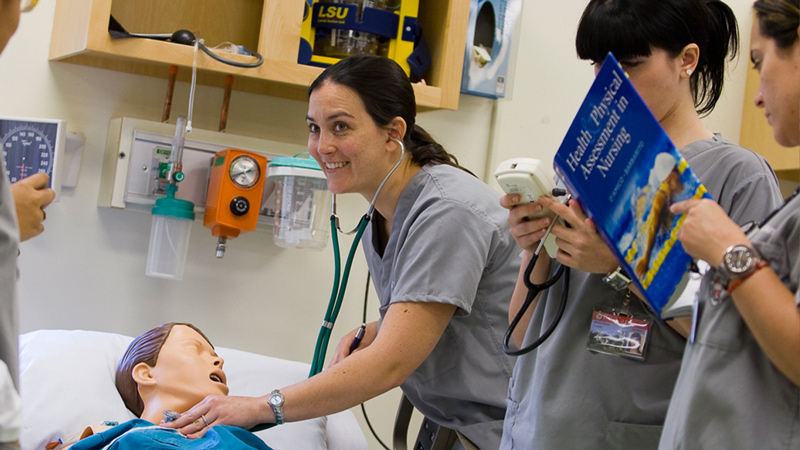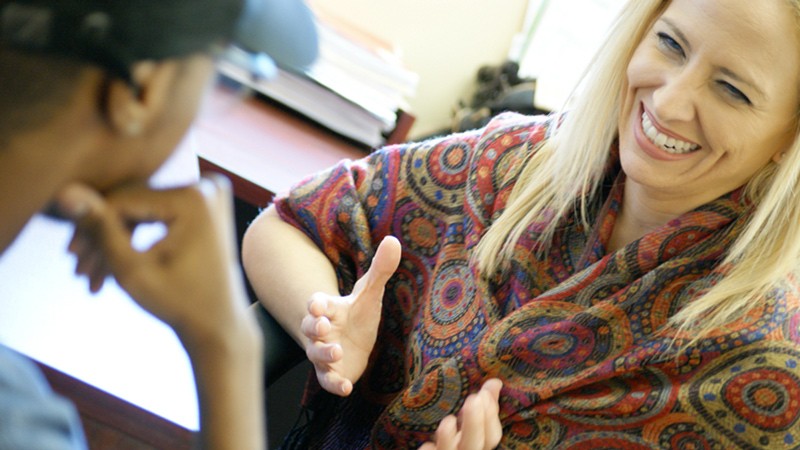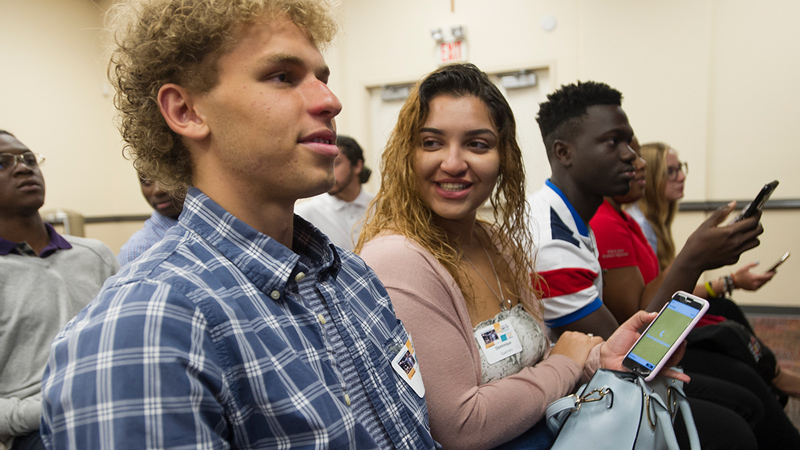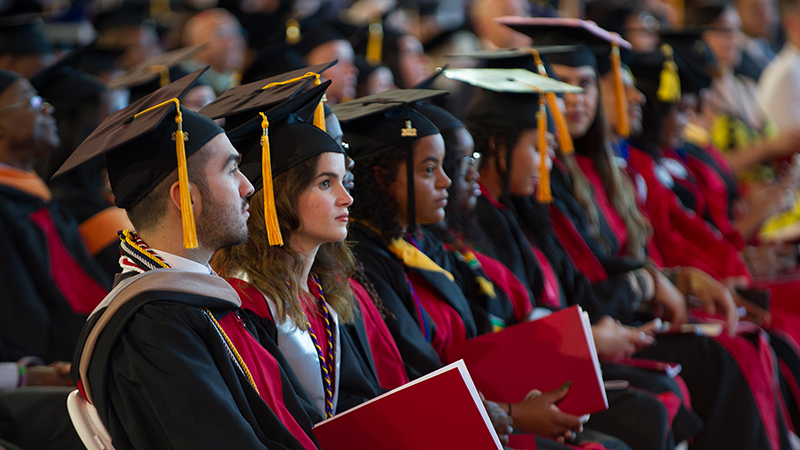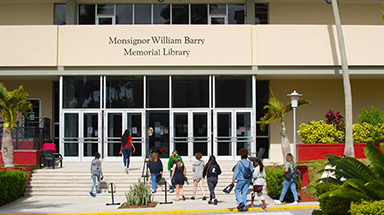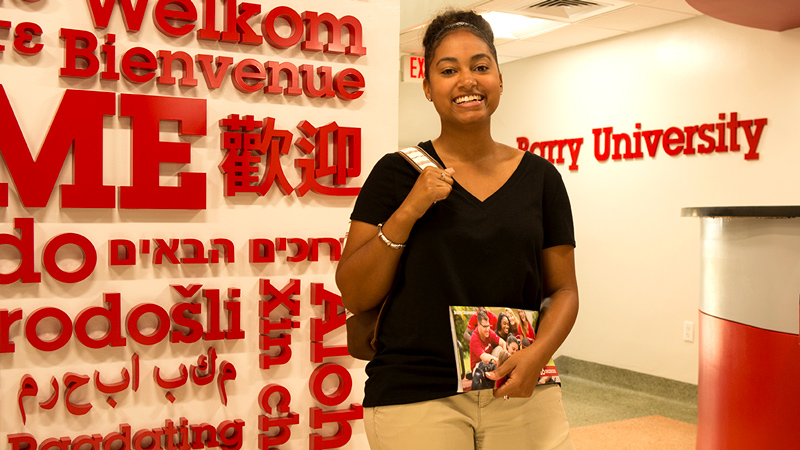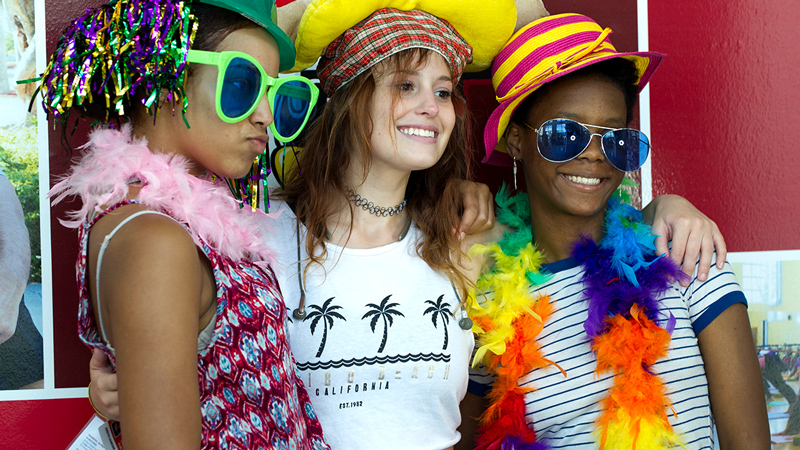The Graphic Design Specialization at Barry University is designed to provide students with skills that examine all aspects of the graphic design process and industry. In addition to receiving a rigorous foundation in a comprehensive design curriculum, students create portfolio quality solutions to a variety of design problems. The program also analyzes past, present and future design trends as they relate to printing, web development, and the emerging social media outlets.
Barry University prides itself on offering all of our students’ personal attention through small class sizes. This commences from the moment of enrollment at Barry and continues through to graduation. Within the Graphic Design Program, the ratio is one faculty member to every fifteen students. This allows our faculty the opportunity to spend valuable one-on-one time with each design student both inside and outside of the classroom. When issues arise outside of the classroom, it is always easy to find a faculty member to assist you.
In addition to small class sizes and a committed faculty, Barry also offers you the latest in creative resources. Currently, we have two state-of-the-art Macintosh labs available to all Fine Art majors. Each of these computers is configured with the newest versions of Adobe creative software. An array of both large and small format printers will allow you to see all of your design projects come to fruition.
A significant component to the Graphic Design program is the Senior Project. This project will be the final component of the professional portfolio that you will develop during your time at Barry. Working with the Fine Arts faculty, students create and produce a cohesive body of work to be displayed at the Senior Exhibit in our beautiful Andy Gato Gallery. Students are given space in this public venue to showcase his or her final project before earning their Bachelor of Fine Arts (B.F.A.) degree.
We measure the success of our program by the achievements of our graduates. Graduates of the Graphic Design program have secured employment in advertising agencies such as the Gray Group in New York City, publishing houses such as Aventura Magazine and private corporate offices such as Assurant. In addition to securing employment, students have also gone on to graduate studies in schools such as Tufts University in Boston, Savannah College of Art and Design, and Norwich University in Norwich, England.
